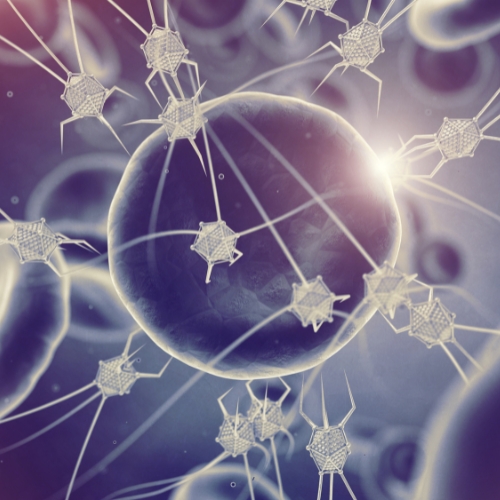Long ago, the idea of tiny machines swimming inside our bodies sounded like pure fantasy. In 1959, Richard Feynman’s talk sparked this dream. The 1966 film Fantastic Voyage only fueled the imagination further. But today, micro and nanorobots have stepped out of fiction and into real labs. These tiny machines promise to reshape medicine, clean our environment, and even change manufacturing forever.
The Spark That Started It All
Feynman’s lecture spoke about controlling things at a tiny scale. People started dreaming of machines smaller than a human cell. But for many years, these ideas stayed on paper. Only in the past two decades have scientists made serious progress. Using smart materials and advanced fabrication techniques, they started building tiny robots that could move, sense, and perform tasks inside living systems.
Clever Ways to Move
At small scales, movement is not easy. Water feels thick, and friction dominates. Traditional motors won’t work. So scientists found creative solutions. Chemically powered robots create tiny jets from reactions on their surfaces. Some use hydrogen peroxide to generate bubbles and push forward. Others rely on magnetic fields, twisting and turning like bacteria.
Ultrasound offers another smart method. Researchers guide robots using sound waves, which can move through tissues without harm. Light-powered robots absorb energy and create motion by shifting charges. Some use electrical fields, making the surface charges dance and push the robot ahead. Each method gives different advantages, allowing robots to work in tricky places.
Hybrid Power: Mixing the Best
Sometimes, one method is not enough. So scientists mix them. Hybrid robots might use chemicals and magnets together. This approach makes robots adaptable. They can work in different fluids or change direction quickly.
Some hybrid robots even combine biological parts. Researchers have used bacteria, algae, or even sperm cells to drive robots forward. These biohybrid robots can sense environments naturally and use nutrients as fuel. It’s a fascinating blend of nature and technology.
Navigating the Body
In medicine, precision is everything. Robots must reach the right spot without getting lost. To do this, engineers give them “navigation systems.” Robots respond to heat, chemical gradients, or light signals. Some follow magnetic paths. Others use internal “compasses” to sense the surroundings.
Cargo delivery is a key goal. Robots can carry drugs and deliver them directly to tumors, infections, or deep tissue sites. This means fewer side effects and more effective treatments. Some robots even enter individual cells, carrying gene-editing tools or sensors.
Teamwork: Power in Numbers
Nature shows us that working together is powerful. Ants build bridges. Fish form schools. Inspired by this, scientists design microrobot swarms. These swarms can assemble, change shape, and perform complex tasks as one unit.
Some swarms use light signals to move together. Others respond to chemical trails or magnetic fields. They can capture pollutants, clear blockages, or deliver drugs in large areas. Future swarms might even repair tissues or fight infections collectively.
Entering the Clinic: Medical Breakthroughs
The medical field stands to gain the most. Robots have been tested inside mouse stomachs to deliver drugs. Some swim through the eye’s jelly-like fluids, helping in microsurgeries. Others attack bacteria deep in lungs using algae-based designs.
Swallowable robot pills are already real. Patients take a pill, and inside, tiny robots start working. They can stick to the stomach lining and deliver medicines more effectively than normal pills. This boosts absorption and reduces waste.
Scientists have also designed robots to enter cells. They can sense genetic material or deliver therapies directly to a cell’s core. This approach promises new ways to treat cancer, genetic disorders, or viral infections.
Tiny Sensors: New Eyes for Science
Robots don’t just deliver cargo. They can act as sensors. Moving robots can detect specific DNA strands, proteins, or toxins in the body. Scientists attach “tags” that light up or change motion when they find a target.
These robots move fast and work without washing steps or complex lab prep. Doctors might one day use them to detect diseases in real time, even during surgery. Some robots can even collect and carry cells, opening doors for advanced cancer diagnostics.
Cleaning Our World: Environmental Uses
Beyond medicine, micro and nanorobots shine in environmental cleanup. Robots move constantly, scrubbing surfaces or capturing floating debris. They can absorb oil, break down toxins, and even collect microplastics.
Some use light to power their cleanup missions. Others rely on magnetic fields, letting people guide them remotely. Their small size lets them reach cracks and tiny spaces that traditional tools can’t access. In rivers, lakes, and oceans, they promise faster, safer cleanup.
Smart Materials: The Building Blocks
Building these tiny robots needs special materials. They must be strong but small, responsive but stable. Scientists use smart polymers, metals, and even biological parts. Some materials change shape when heated or exposed to light.
Designers aim for biocompatibility. Robots should work safely inside bodies without harming tissues. They also need to be eco-friendly if used outdoors. Choosing the right material is as important as the robot’s shape or movement.
Challenges on the Horizon
Despite the hype, many challenges remain. Manufacturing robots at large scale is tough and costly. Ensuring they are safe for human use requires strict testing. Regulatory approvals take years.
Ethical questions also arise. How do we control robots inside bodies? What happens if they escape or malfunction? Scientists and policymakers need to address these before robots become mainstream tools.
The Future: A Tiny Giant Leap
The dream of micro and nanorobots is moving fast. In labs worldwide, teams race to make them smarter, faster, and safer. They could become routine tools in hospitals, environmental agencies, and research labs.
Imagine a future where a simple pill delivers robots that repair organs. Or a river cleaned overnight by swarms of self-guided robots. These ideas no longer sound impossible.
With each new breakthrough, these tiny machines move closer to big roles in our lives. From fighting cancer to saving oceans, micro and nanorobots might become the tiny giants we rely on every day.
The study is published in the journal ACS Nano. It was led by Xiaohui Ju from Brno University of Technology.






